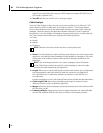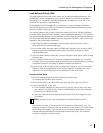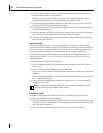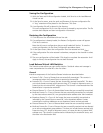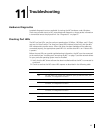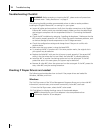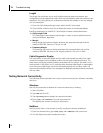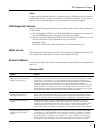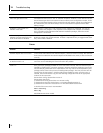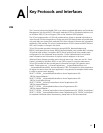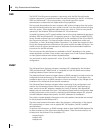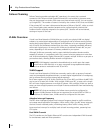
11 Troubleshooting
96
Length
The Length sub tab allows you to verify cable length and determine whether your
configuration has the appropriate cable, which are calculated by cable loss and return loss
algorithms. This utility allows you to determine whether the problem is with the adapter
or in the cable plant.
1
From the Cable Analysis/Length screen, select the NIC to be tested.
2
Click
Initialize
, and then click
Test
to display the status of the selected adapter.
Interface components of the BASCS Cable Analysis window are described below:
■
Cable Length Field
This field presents the estimated cable length in meter on each individual channel
using two different algorithms.
■
Margin
Margin yields the minimum distance between the measured cable pair and the
maximum IEEE 802.3ab limits. The unit is in dB.
■
Frequency Margin
This measures the minimum distance between the measured cable pair and the
maximum IEEE 802.3ab limits in the frequency domain. The unit is in MHz.
Cable Diagnostics Display
The combination of the cable length and the cable status reveal the state of the cable
connection between the local adapter and the far end node (hub/switch/routers). The
cable status will display possible problems associated with the cable if the cable is not in
working order. If the cable is not in working order, displayed cable length is meaningless,
since the correct cable length cannot be calculated properly with a broken cable. The
status window displays various error messages that diagnose possible problems associated
with the cable.
Testing Network Connectivity
The following section describes how to test network connectivity for Windows, NetWare,
and Linux.
Windows
Use the ping command to determine if network connectivity is working.
1
Select
Start/Run
.
2
Ty pe
cmd
and click
OK
.
3
Ty pe
ipconfig/all
to display the command window.
4
Enter
ping <IP address>
from the command line.
This displays the network connectivity information.
NetWare
Use Ping and IP host on the network to verify connection has been established.
1
From the command line, type
load ping <IP address>
then press Enter.
2
This will display the packet send/receive status.



